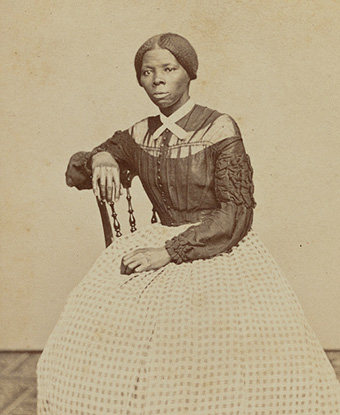
"Harriet Tubman—Underground Railroad "conductor," abolitionist, Union spy, and suffragist
Born into slavery on Maryland's Eastern Shore in 1822, Tubman was named Araminta by her enslaved parents, Ben and Rit Ross. At the age of 12 or 13, while working at the Bucktown General Store, Tubman was hit in her forehead head by a two-pound weight, recklessly thrown by an overseer who was trying to catch a runaway slave. The skull fracture left Tubman with a lifetime of physical and mental challenges, including:
Headaches: She experienced chronic and severe headaches
Seizures: She suffered from seizures, which she sometimes referred to as "sleeping spells".
Hypersomnia/Narcolepsy: Historians believe she may have had narcolepsy, a condition that causes excessive daytime sleepiness, and difficulty controlling sleep-wake cycles.
Visions: She began experiencing vivid dreams and visions, which she interpreted as revelations from God. These visions played a significant role in her activism, and her work on the Underground Railroad.
"Minty" recovered, however, and grew strong and more determined to be free, and lead others to freedom. She underwent brain surgery in her 70's.
Changing her name to Harriet, upon her marriage to a free man, John Tubman, in 1844, she escaped slavery five years later when, upon the death of her enslaver, Edward Brodess, she was to be sold. One hundred dollars was offered for her capture.
Vowing to return to bring her family and friends to freedom, she spent the next ten years making about 13 trips into Maryland, to rescue them. She also gave instructions to about 70 more slaves, who found their way to freedom independently.
Tubman successfully used the skills she’d learned while working on the wharves, fields, and woods, observing the stars and natural environment, and learning about the secret communication networks of free and enslaved African Americans, to affect her escapes. She later claimed, I “never ran my train off the track and never lost a passenger”.
The famous abolitionist William Lloyd Garrison dubbed her "Moses”.
A lifelong humanitarian and civil rights activist, she formed friendships with abolitionists, politicians, writers and intellectuals. She knew Frederick Douglass, and was close to John Brown and William Henry Seward. She was particularly close with suffragists Lucretia Coffin Mott, Martha Coffin Wright, and Susan B. Anthony. Intellectuals in New England's progressive circles, such as Ralph Waldo Emerson, William Lloyd Garrison, Bronson Alcott, Harriet Beecher Stowe, Franklin B. Sanborn, and Mrs. Horace Mann, befriended her, and her work was heralded beyond the United States.
During the Civil War, she served the United States Army as a spy, scout, nurse and cook. In early 1862, Tubman traveled to South Carolina to provide badly needed nursing care for African-American soldiers and civilians. Working with Major General David Hunter, Tubman also began spying and scouting behind Confederate lines.
On June 1, 1863 she joined Colonel James Montgomery and his 2nd South Carolina Infantry, composed of emancipated slaves, in an assault on several plantations along the Combahee River. This raid rescued more than 700 enslaved people, many of whom later enlisted in the Union army. These actions weakened the Confederate economy, while providing the Union army with more soldiers. Her role in the raid, celebrated in the press, increased her fame.
Tubman showed the same zeal and passion for the campaign to attain women's suffrage, after the American Civil War, as she had shown for the abolition of slavery.
Harriet Tubman died in 1913 in Auburn, New York, at the home she purchased from Secretary of State William Seward in 1859, where she'd established the Harriet Tubman Home for the Aged.
She was buried with military honors at Fort Hill Cemetery.
The Harriet Tubman Underground Railroad National Historical Park in Dorchester County, Maryland, highlights Tubman’s early life, and features a visitor center with comprehensive exhibits, the site of the plantation where Tubman was enslaved as a girl, and the general store where she suffered her traumatic head injury.
The Harriet Tubman National Historical Park in Auburn, New York, highlights her later life, and includes the house she owned and eventually donated to become a refuge for the ill and the elderly, as well as the Thompson Memorial African Methodist Episcopal Zion Church, which she raised money to build. Visitors can also see Tubman’s grave at a nearby cemetery which is unaffiliated with the historical park."


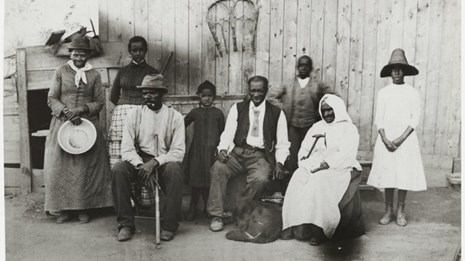
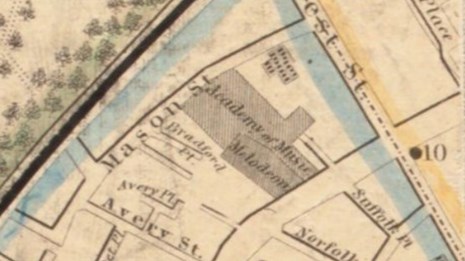
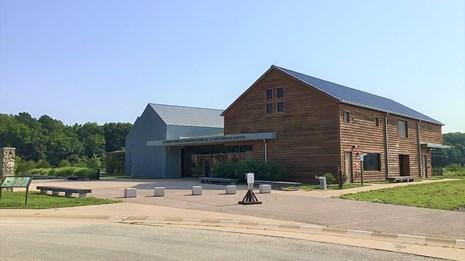
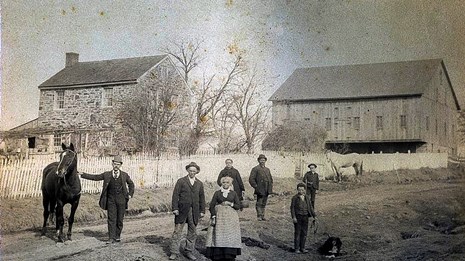
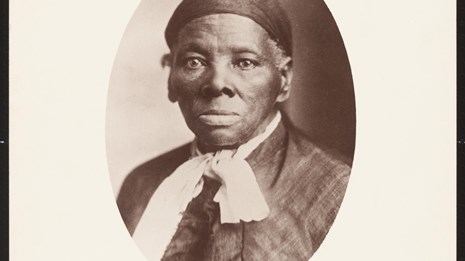
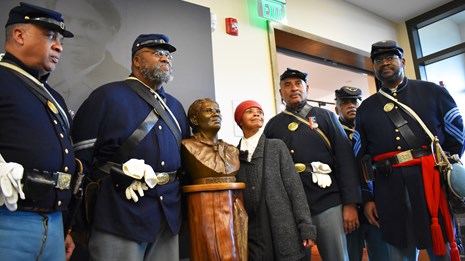






















No comments:
Post a Comment